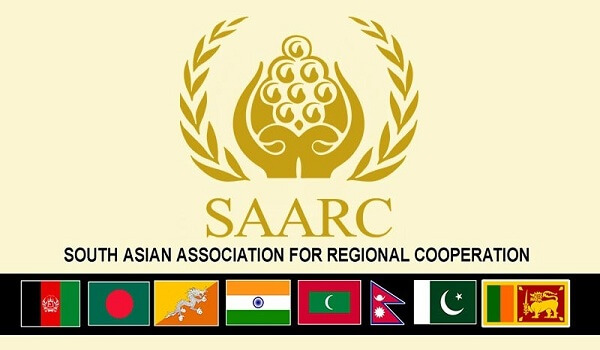South Asian Association for Regional Cooperation (SAARC) celebrated its 40th Charter Day on December 8, 2024. This day is celebrated every year to honor the establishment of SAARC.
South Asian Association for Regional Cooperation
- Regional cooperation in South Asia was first discussed at the Asian Relations Conference (1947), the Baguio Conference (1950), and the Colombo Powers Conference (1954).
- The SAARC concept took shape in 1980 when Bangladesh’s President Ziaur Rahman proposed regional cooperation to promote peace and stability.
- SAARC was officially established on 8th December 1985, in Dhaka, Bangladesh, with 7 founding members: Bangladesh, Bhutan, India, Maldives, Nepal, Pakistan, and Sri Lanka.
- Afghanistan joined as the 8th member in 2007.
Objectives
- Promote welfare and improve quality of life in South Asia.
- Accelerate economic growth, social progress, and cultural development.
- Strengthen self-reliance and mutual trust among member states.
- Enhance collaboration in economic, social, cultural, technical, and scientific fields.
- Cooperate with other developing countries and international organizations.
- Key Principles: Sovereign equality, territorial integrity, non-interference, and consensus-based decision-making.
- Significance of SAARC: SAARC comprises 3% of the world’s land area, 21% of the world’s population and 5.21% (USD 4.47 trillion) of the global economy, as of 2021.
- Scope of Cooperation: SAARC’s agenda includes the South Asian Free Trade Area (SAFTA), established in 2004 and effective from 2006, aimed at reducing tariffs and promoting free trade in South Asia.
- The SAARC Agreement on Trade in Services (SATIS) came into force in 2012, to enhance intra-regional investments and liberalize trade in services.
Relevance of SAARC in Today’s Context
- Platform for Dialogue: Despite its dysfunction, SAARC remains the one of the few platforms where South Asian countries, including India and Pakistan, can engage in dialogue.
- Periodic summits provide opportunities to address pressing regional issues, such as climate change and poverty, even if no concrete outcomes emerge.
- Shared Regional Solutions: Issues like cross-border terrorism, and pandemics demand a collective regional response.
- SAARC has previously coordinated initiatives, such as the establishment of a Covid-19 Emergency Fund, highlighting its utility during crises.
- Potential for Economic Integration: With a combined GDP of over USD 4 trillion and a population of nearly 1.8 billion, South Asia has significant untapped potential.
- SAARC’s frameworks, such as SAFTA and the SAARC Agreement on Trade in Services, can still be revitalized to enhance trade and economic cooperation.
- Avoiding Overdependence on External Frameworks: Ignoring SAARC may force member nations to rely heavily on external platforms like ASEAN or China-led initiatives such as the BRI.
- SAARC provides a means for South Asia to control its developmental trajectory.
India’s Contribution to SAARC
- SAARC Summits: India has hosted three out of the eighteen SAARC Summits: the 2nd summit in Bengaluru (1986), the 8th summit in New Delhi (1995), and the 14th summit in New Delhi (2007).
- Technological Cooperation: India has extended its National Knowledge Network (NKN) to countries such as Sri Lanka, Bangladesh, and Bhutan, fostering educational and technological exchange. Additionally, India launched the South Asian Satellite (SAS) in 2017, providing satellite-based services to SAARC countries.
- Currency Swap Arrangement: In 2019, India approved the incorporation of a ‘Standby Swap’ in the Currency Swap Arrangement for SAARC members, amounting to USD 400 million, aimed at enhancing financial cooperation.
- Disaster Management: India hosts the Interim Unit of the SAARC Disaster Management Center in Gujarat. This center provides policy advice, technical support, and training for disaster risk management across SAARC countries.
- South Asian University (SAU): India is home to the South Asian University, established through an Inter-Governmental Agreement at the 14th SAARC. It provides world-class education and research opportunities for students and scholars from SAARC nations.

